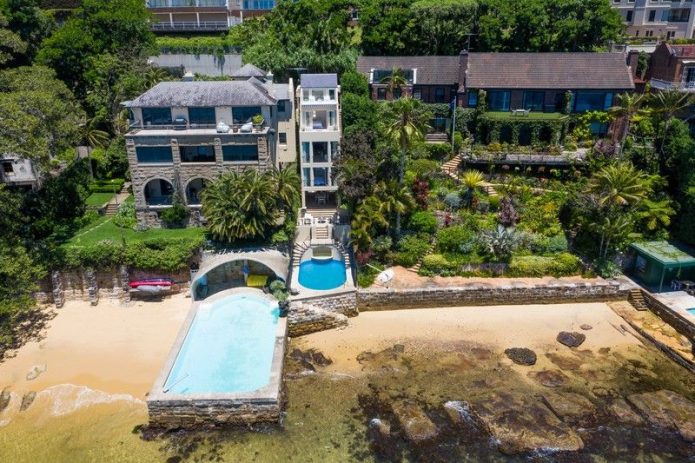PHOTO: REINZ chief executive Jen Baird
House prices are falling as tighter credit conditions, higher mortgage rates and increased housing supply impact the market.
Sales are slower and properties are staying on the market longer as well, according to the latest data and insights from the Real Estate Institute of New Zealand (REINZ).
REINZ found while prices are still up 2.4 percent annually, from $820,000 in May 2021 to $840,000 in May 2022, they’ve dropped 4 percent in May compared to April.
The median residential property price for New Zealand, excluding Auckland, increased 7.6 percent annually from $678,500 in May 2021 to $730,000 in May 2022 – a drop of 3.3 percent from $755,000 in April.
Auckland has been particularly affected by the slowing market with annual median prices down 2.2 percent compared to May last year, from $1,150,000 to $1,125,000. The last time the annual median price dropped in Auckland was October 2019 (down 0.1 percent). The region also recorded a month-on-month decrease of 3.9 percent – down from $1,171,000 in April.
Auckland City was hit the hardest, down 12.9 percent as well as Papakura District, down 4 percent month-on-month. The North Shore was also down 1.9 percent. Conversely, all other districts were up, most notably Franklin District was up 19.2 percent and Rodney District was up 13.2 percent.
Hawke’s Bay however showed no change from May 2021 to May this year. The West Coast was the only region to see record price growth this year hitting $395,000 – up 30.8 percent from $302,000 the same time last year. This was the first record price in the region since December 2021.
Overall, May 2022 had the least number of record median prices in a May month since 2019.
REINZ chief executive Jen Baird said the data shows house prices have come off their peak.
Baird said the market is cooling as the Reserve Bank of New Zealand hikes the official cash rate in response to rampant inflation.
“Over the course of 2021, house prices soared, largely due to supply not being able to meet demand, supported by historically low interest rates and access to capital.
“Measures introduced by the Government – including the reintroduction of LVRs and changes to the Credit Contracts and Consumer Finance Act (CCCFA) and the Reserve Bank OCR hikes have affected market dynamics, and we are now seeing the reverse playout. The price growth of last year is receding.
“With further increases to interest rates to counter inflation expected and global economic uncertainty and supply chain disruption caused by the conflict in Ukraine, we may see market activity settle this winter at its new, slightly slower, pace,” she continued.
Sales increase month-on-month
Across New Zealand, the number of residential property sales decreased annually as well – down 28.4 percent in May 2022, from 7758 in May 2021 to 5556. But they increased from April, up 11.0 percent – from 5006 last month.
The sales count for New Zealand, excluding Auckland, decreased 22.6 percent annually from 4902 to 3795. Month-on-month, this was an increase of 12.2 percent – up from 3383 last month.
Nelson was the only region to see an annual increase in sales; the region was up 4.5 percent compared to the same time last year, from 67 to 70. All other regions saw an annual decrease in the number of sales.
Additionally, Wellington had its lowest sales count for a May month, including lockdown affected May 2020. The region saw a 29.7 percent decrease annually – from 735 to 517.
The regions with the greatest annual percentage decrease were:
• West Coast, which decreased 52.5 percent annually from 61 to 29; the lowest sales count for a May month since 2015 (inc. May 2020)
• Auckland, which decreased 38.3 percent annually from 2856 to 1761; the lowest sales count for a May month since 2008 (excl. May 2020)
• Waikato, which decreased 31.5 percent annually from 744 to 510; the lowest sales count for a May month since 2011 (excl. May 2020)
• Bay of Plenty, which decreased 31.5 percent annually from 463 to 317; the lowest sales count for a May month since 2010 (excl. May 2020).

House Price Index showing signs of decline
The REINZ House Price Index (HPI) for New Zealand, which measures the changing value of residential property nationwide, showed an annual increase of 3.7 percent from 3806 in May 2021 to 3946 – down 7.7 percent from its peak in November 2021.
For New Zealand, excluding Auckland, the House Price Index increased 5.8 percent annually – from 3850 in May 2021 to 4072 in May 2022.
There were no regional highs on the index this month, and Wellington saw a further decrease on the index, down 6.9 percent compared to May last year – from 4063 to 3781. Wellington has now ranked bottom two of all regions on the HPI for seven consecutive months.
Auckland had the second-lowest result, seeing annual growth on the house price index of 0.6 percent – from 3751 to 3774.
Canterbury and Northland ranked at the top of the HPI. Canterbury has been in the top two in terms of HPI movement for eight months and, in May 2022, recorded an annual increase of 16.5 percent – up from 3223 in May 2021 to 3754. Northland has ranked second for five months, showing an annual increase of 12.9 percent in May 2022 – from 3818 to 4312.
Properties taking longer to sell
Nationwide, the median number of days to sell a property increased from 13 days year-on-year to 43. While in New Zealand, excluding Auckland, it increased by 14 days to 43 – the highest median number of days since February 2019 (excluding COVID-19 lockdown-hit April and May 2020).
Only the West Coast saw an annual decrease in the median – down one day to 30.
Excluding April and May 2020, May 2022 recorded the highest days to sell in:
• Gisborne since February 2019
• Hawke’s Bay since May 2015
• Manawatu/Whanganui since Aug 2015
• Southland since January 2019
• Wellington since June 2011.

Supply continues to creep up
In May 2022, the total number of properties available for sale nationally increased 77.6 percent, from 14,883 in May 2021 to 26,435.
For New Zealand, excluding Auckland, inventory increased 93.7 percent from 8155 to 15,799.
All regions bar the West Coast (up 18.9 percent) had an annual increase in inventory levels of 40 percent or more. While six regions saw inventory more than double compared to the same period last year.
For six months, Wellington and Manawatu/Whanganui have had over twice the inventory they recorded in the same month the year prior – up 187.9 percent and 140 percent, respectively, in May 2022 compared to May 2021.
In addition, Hawke’s Bay increased 148.4 percent, Bay of Plenty was up 147.7 percent, Nelson saw inventory rise by 113.6 percent, and Waikato by 109.5 percent compared to May 2021.
Looking at listings, Nelson, Northland and Bay of Plenty all have over 20 percent more listings than one year prior.
Listings in Gisborne were down 27.9 percent compared to May last year – the fourth month listings have been less than the year prior.
Meanwhile, in Southland, listings were down 15.1 percent compared to May last year – the fifth consecutive month listings have been less than the year prior.
“We continue to see an increase in homes available for sale, with a national annual increase of 77.6 percent in May. This upward trend in supply coincides with a quieter market, squeezed by tightened lending criteria,” Jen Baird said.
“There are several factors at play. There is more property for sale on the market, giving buyers welcome choice and more time to find the right property for their stage in life and undertake their due diligence. At the same time, financing criteria and an increase in conditional sales and negotiations result in a longer transaction process.
“It’s self-fulfilling; more supply, more choice, less urgency, slower sales. The impact is that there is less upward pressure on prices,” Baird added.
Percentage of sales by auction down
In May 2022, 606 properties were sold by auction across New Zealand, representing 10.9 percent of overall sales compared to 28.2 percent this time last year. In April, the percentage of sales by auction was 14.6 percent.
For New Zealand, excluding Auckland, 7.8 percent of properties were sold by auction in May 2022 compared to 18.7 percent in May 2021.
Gisborne had the highest percentage of sales by auction at 23.4 percent (11), though down from 50.0 percent at the same time last year (29). Canterbury had the second-highest percentage of sales by auction at 17.7 percent (160).
In Auckland, the percentage of sales by auction was 17.6 percent in May 2022 – down from 44.5 percent the year prior.
READ MORE VIA NEWSHUB














